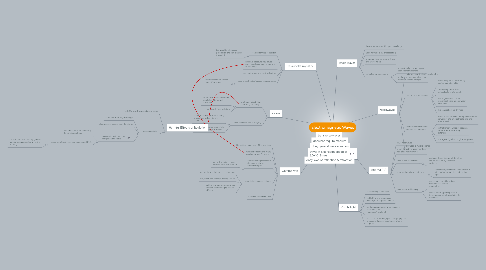
1. transverse waves
2. obey general wave equation
3. travel at a constant speed of 3.0x10^8 m/s
4. does not require medium
5. obey laws of reflection & refraction
6. Ultra-violet rays (UV)
6.1. causes tanning of the skin
6.1.1. because UV stimulates production of a skin pigment (melanin)
6.2. excessive exposure may cause sunburn and even skin cancer from DNA damage
6.3. used by flowers to attract pollinators
6.4. used in bank notes/passports/credit cards
6.4.1. UV watermarks will appear under UV exposure
7. X-rays
7.1. high frequencies & high penetrating capability
7.1.1. so, exposure is hazardous and people have to be well protected
7.1.2. cancer risk from radiation
7.2. used in X-ray medical imaging
7.2.1. boens appear black as most X-ray is absorbed by high density bones
7.2.2. white/grey portions indicate little or no absorption by soft tissues
8. Gamma rays
8.1. highest frequency end of EM spectrum
8.2. most penetrating and highly ionizing form of EM wave
8.3. emitted during radioactive decay of unstable atoms/isotopes
8.3.1. part of the widely known hazardous nuclear radiation
8.4. used to treat cancer patients
8.4.1. rays are targeted at cancerous tumours
8.4.2. but, it can also damage healthy tissues
8.4.3. patients experience nausea, hair loss and haemorrhaging as side effects
8.5. also used to sterilise tools
9. Harmful Effects of Radiation
9.1. only UV rays, X-rays and gamma rays
9.2. ionizing radiation
9.2.1. cause electrons to gain energy
9.2.2. electrons can escape from the atoms
9.2.3. causing atoms to become charged and unstable
9.2.3.1. unstable atoms are more likely to initiate reactions
9.2.3.2. cause mutation in cells due to damaged DNA
9.2.3.2.1. can lead to cancer or faulty generic material being passed down to the offspring
10. Radio waves
10.1. lowest frequencies & longest wavelength
10.2. used for radio & TV broadcasting
10.3. also used in remote control cars and walkie-talkie
10.4. reflected by Ionosphere
10.4.1. an electrically charged layer of the upper atmosphere
10.4.2. so they can reach receivers that are not in the line of sight
11. Microwaves
11.1. radio waves with short wavelengths
11.2. used in microwave oven
11.2.1. food is subjected to oscillating electromagnetic fields
11.2.2. causing high polar water molecules to rotate rapidly
11.2.3. heat is generated due to friction/collisions among water molecules
11.2.4. this cannot heat up dry food
11.3. microwave transmission systems use repeaters
11.3.1. a device that receives through one antenna, converts it into an electrical signal and retransmits it
11.3.2. so that large volumes of data can be transmitted over long distances
11.3.3. propagate signals through atmosphere
11.4. also used in mobile phones
12. Infrared (IR)
12.1. NOT heat waves
12.2. sun/light bulbs emits more than half of its radiation in IR
12.3. used in remote controls
12.3.1. one type of remote control signal can only be received by a specific appliance
12.4. used in night vision equipment
12.4.1. they amplify ambient IR and converts it into electric signals, then into visible light
12.5. used in thermal imaging
12.5.1. images are created based on differences in surface temperature
12.5.2. used in airports/public places to detect people with fever during flu epidemics
